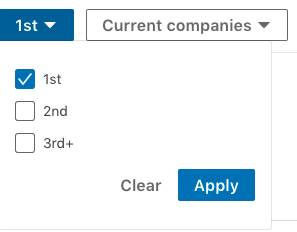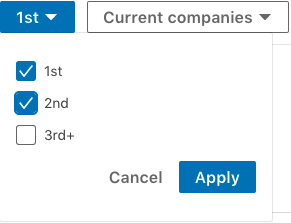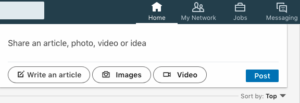
LinkedIn is an excellent tool for professional growth and to generate business leads. According to the Content Marketing Institute, 92% of B2B marketers use social media for content distribution. As a result, many people are keen to increase the number of connections they have on LinkedIn. But using LinkedIn effectively isn’t only about the quantity of connections that you have. It’s about the quality of your connections and your ability to engage with them. Is your network engaging regularly with your LinkedIn posts?
There’s no doubt that it’s a great feeling when you log in to LinkedIn and see that someone has liked, shared, or commented on something you posted. After all, we use social media to engage with others, and it feels good to know when someone appreciates what we share. But isn’t it equally disappointing when hours and days tick by without anyone responding at all?
Let’s break the “post-and-wait” cycle. With a few simple tricks, you can learn to create LinkedIn posts that your network will love.
Step one: Optimize your LinkedIn profile
Before you start working to increase engagement with your LinkedIn posts, review your profile to make sure that you put forward your best professional image. There are several elements in a powerful LinkedIn profile. The top three include:
- Professional photo: Having a quality headshot will increase the likelihood that someone will read your profile.
- Compelling headline: This is the first thing people see after they find your name and photo. Make it concise and compelling.
- Top-notch summary: You summary is how people will get to know you. Include your best professional highlights, and show how you can help people that you want to connect with.
Doing these things will increase the likelihood that people who see your posts will want to engage with you. For more on how to take a great photo, check out this quick video.
Step two: Measure your level of engagement
To increase the number of people who engage with your LinkedIn content, you first need to assess your current level of engagement so that you know where you’re starting from. This will be your baseline, and it is easy to measure.
- Log in to LinkedIn
- Click on “me” in the upper right corner
Your personal dashboard will appear, which shows how many people have viewed your profile, how many post views you have, and how many searches you have appeared in. For now, we are interested in the second number: how many post views you have. Follow the next steps to help you increase that number!

Step three: Get to know your LinkedIn network
The obvious way to get more likes, comments, and shares on your LinkedIn posts is to share things that people in your network care about. To do that effectively, you need to know more about who is in your network.
Your network starts with the number of first level connections you have, but it is actually much bigger than that—it includes all the people that your first-degree connections are connected to, as well as all the people who are connected to them.
Why do those people matter? Because when one of your first-degree connections likes, shares, or comments on one of your posts, all of their connections—your second-degree connections—see it. That dramatically increases your degree of influence. And if one of their connections reads and likes your post too, your post will reach their connections too.
Your influence is strongest with your first and second-degree connections, so that is who we’re most interested in. You can also think of this as your degree of influence. To appeal to these people, you have to know who they are.
It takes a bit of searching on LinkedIn to do this, but we promise that it’s worth your time! Social media guru Neil Patel gives step-by-step instructions on how to do this. Here is a summary, building on the steps we followed above:
- Click on “me” in the top right corner
- Select “view profile”
- Choose “see connections”
Your first-degree connections are all the people you have chosen to directly connect with on LinkedIn, either because you sent them a connection request or you accepted their request to connect with you. Since LinkedIn is a professional network, these people are probably already in your niche.
If that’s not the case, now is a good time to think about other people you can connect with to broaden your reach. Take a few minutes to do this, but don’t dwell on it for too long—your network is already bigger than you think, and the next steps will help you tap into that.
Ready? See where it says “1st”? Click that to expand the menu. You will see that only the checkbox that says “1st” has been marked. Check the box that says “2nd”, as shown below, then click “apply.”



Now, LinkedIn will show you the total number of people who are connected to all of your direct connections—see how much bigger that number is? This number represents all the people you want to reach with your LinkedIn posts. Take a moment to look through this list and see who they are.

Step four: Create quality content
Now that you have a better grasp of who is in your LinkedIn network, you can start to share content that they will want to read.
The first question you need to ask is: Within your network, who are you trying to reach? Don’t be tempted to say “everyone”. No single post will appeal to everyone. Even if your network is still relatively small, it is probably very diverse. For each post you create, focus on a subset of the people in your network that you hope to engage.
The secret to engaging with this group—whoever they are—is simple: instead of just sharing a post about a topic that interests you, share a post that connects your interest to something they care about. What topics are they interested in? What problems are they trying to solve? You will see more engagement by posting things that are directly relevant to them. And remember, LinkedIn is a professional network. The more you connect your post to their business needs, the more success you’ll have.
Also, remember that professional can still be personal. The most successful posts—and the best type of engagement—come from LinkedIn content that people write themselves. This is important if you want to establish yourself as an expert in your field and increase your influence. Sharing posts written by others is still valuable, but to increase engagement in a way that supports your business growth, you need to speak with your own voice.
LinkedIn’s publishing system makes this easy. From the main LinkedIn page, just click on “write an article.” A new page will open with a text box where you can write your post.

As an expert in your niche, speak to your audience from a first-person perspective. For example, “In my experience,” or “I learned an important lesson today.” This shows your audience that you’re a real person with something valuable to share.
When you’re finished, don’t forget to proofread it for spelling and grammar. You can also use LinkedIn’s tools to include subheadings in your post to make it easy for readers to follow, and include an accurate and appealing headline that will attract readers.
LinkedIn also allows you to include a picture with your posts, which is definitely something you should do. Posts with pictures perform better than posts without them, and pictures that show human faces perform best. It’s all about human interaction—your audience will respond best when they feel like they are connecting on a personal level.
Step five: Evaluate your progress
Review your dashboard on a regular basis to see which posts are performing the best. Do they have a style that your network loves? Is it a topic of special interest? What about the ones that performed less well? Learn from what you’re doing, and make adjustments to continue improving your engagement.
Creating original, high-quality content takes time, but it will increase the engagement you get from your connections and that will you expand your influence. It won’t happen overnight, but if you follow these tips and post consistently, you can effectively use LinkedIn to strengthen engagement and support your business goals. Are you hooked on LinkedIn? Learn everything you need to know about LinkedIn marketing on our blog!